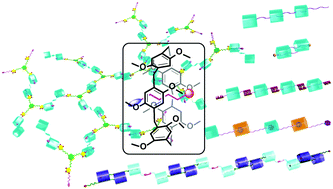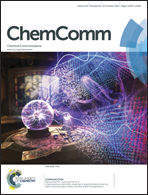Pillararene-based supramolecular polymers: from molecular recognition to polymeric aggregates
Abstract
Pillar[n]arenes (P[n]As) and their derivatives, consisting of (substituted) hydroquinone units linked by methylene bridges at para-positions, are new type of cyclophane hosts developed in 2008. Their intrinsic characteristics and properties, such as facile preparation and flexible modification, symmetrical and columnar architectures, very rigid and π-rich cavities, as well as intriguing and peculiar guest complexation capability, make them ideal building blocks for the fabrication of polymeric supramolecules. This Feature Article provides an overview of the construction of pillararene-based supramolecular polymers and covers recent research endeavors of the marriage between pillararene-based host–guest pairs and polymeric aggregates. These polymers are classified into two major classes according to the different types of guest species: (1) supramolecular polymers relying on pillararene-based cationic guest recognition; (2) supramolecular polymers relying on pillararene-based neutral guest recognition. The host–guest motifs, building strategies, topological architectures, stimuli-responsiveness and functionalities are comprehensively discussed.

- This article is part of the themed collection: Polymer Self-Assembly

 Please wait while we load your content...
Please wait while we load your content...